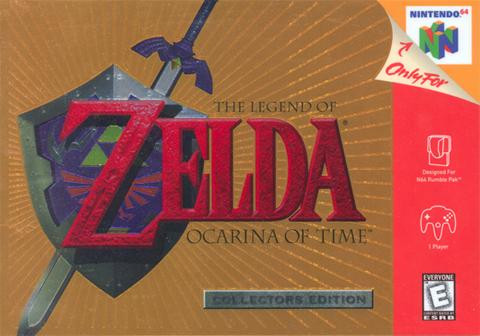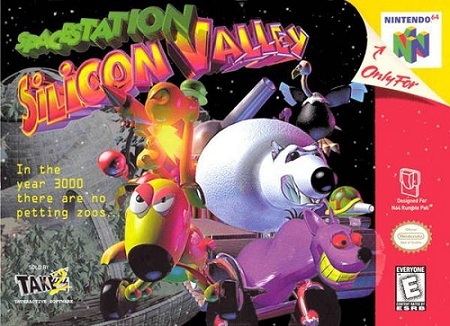This post has not been edited by the GamesBeat staff. Opinions by GamesBeat community writers do not necessarily reflect those of the staff.

Gaudy reflective gold is so alluring….
As my game-buying frequency has dropped dramatically over recent years, I often recall the days when I bought so many titles in so little time that I could not keep up with them. The method that I used to choose them seems like an entirely foreign concept to me today.
It was a simpler time — pre-imillenial in fact — when I innocently bought games based only on their box art. Apparently, the sage words “don’t judge a book by its cover” were lost on me.
Other factors played a role, of course, such as commercials during my weekly Saturday-morning-cartoon ritual. When I think back on it, the only reason I bought The Legend of Zelda: Ocarina of Time was because of the epic (as I remember it) commercial that continuously aired. But for the most part, I used to travel to my local Toys "R" Us with the family to buy a game, and I didn’t know which one I wanted until I hit the shelves.
This is where the box covers enormously influenced my decision. Those that stood out the most from the sea of garish art grabbed my attention first. After a quick glance over the description on the back, I would make my snap decision.
For the most part, I chose well: Rocket Knight Adventures for the Sega Genesis, Super Smash Bros. for the Nintendo 64, just to name a couple. However, I also chose some hidden gems that I probably would not purchase today: Space Station Silicon Valley and Tonic Trouble, both for the N64, come to mind.

This cover caught my attention immediately.
I was completely oblivious to the fact that there was such a thing as “quality,” and I had no idea which games had it, and which did not. Additionally, I also had no concept of the critical evaluations offered by magazines. Every game I owned was great in my opinion. Anything that could offer an ounce of entertainment and distract me from my math homework was A-OK by me.
It was an innocent and slightly naive time. But that all changed when I first discovered Electronic Gaming Monthly.
This magazine introduced me to the concept of “review scores.” Just for fun, I looked at the scores the reviewers had given some of my games, and I did not like what I found.
Rush 2: Extreme Racing USA was a 4.5?! That was perhaps one of my all-time favorites, and it's still up there today. Waialae Country Club a 3.0? What was wrong with these critics?
Nevertheless, scores influenced my buying from then on, and they continue to do so today. Perhaps I was willing to take risks with my money back then, but then again, what 8-year-old has financial concerns? Allowance money meant, quite simply, more games — didn't matter which. That was my mentality.
As I've grown older, life and college have depleted my disposable income, leaving me unable to buy things at random. Review scores help me determine whether or not a certain game is worth spending my money on.
With the increasing prominence of digital downloads, I wonder if cover design is becoming a lost art. Digital downloads prominently display review scores, which is something that you won’t see on a game case.. You might get a one-line quote from a positive review. Perhaps this will influence the younger generation today to actually research the games that they plan to buy.
